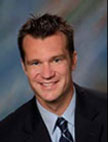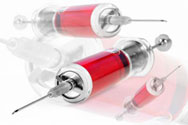|
PT Classroom - Rehabilitation Specific Concerns with Pro-Inflammatory Injections ׀ by Bryant J. Walrod, MD |

Dr. Walrod is a Board Certified Family Practice Physician specializing in Primary Care Sports Medicine, Sports-Related Injuries and Musculoskeletal Health. Dr. Walrod holds a Certificate of Added Qualification (CAQ) in Sports Medicine after completing his Primary Care Sports Medicine fellowship training at the Medical College of Wisconsin during which he was Team Physician for the Milwaukee Brewers, Milwaukee Ballet, and the US National Speed Skating Team. He is a member of Comprehensive Orthopaedics, SC and remains on faculty at the Medical College of Wisconsin. He also actively publishes in numerous sports medicine related journals and textbooks. |
|
Rehabilitation Specific Concerns with Pro-Inflammatory Injections |
| . |

Many of you may have seen or heard the recent press
conference from Tiger Woods at the Masters. He was asked
about Performance Enhancing Drugs (PEDs). He stated that he
never took PEDs but that he did undergo Platelet Rich Plasma
Therapy (PRP) injections into both his Lateral Collateral
Ligament and recently a poorly healing Achilles Tendon. He
credited PRP with his quicker return to play. Many of you
may have heard of pro-inflammatory injections like
prolotherapy and PRP. I will try to explain a little bit
about each of them here ending with an emphasis on
rehabilitation specific concerns.
Last revised: April 14, 2010 |
|
|
|
|







